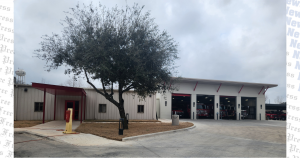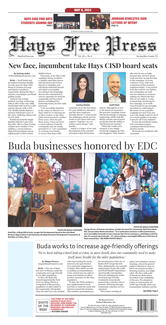By Kim Hilsenbeck
Is it time for residents to start paying the full price for emergency services?
Buda Fire Chief Clay Huckaby is hoping voters will think it is, as they have a chance to make a difference in the lean budget on which the Emergency Services District 2 (ESD2) runs.
Voters will decide in a May 9 special election if they will help further fund the agency responsible for providing emergency medical response in northeastern Hays County. The district provides paramedics and other medical response personnel.
The special election asks voters for an increase from 3 to 10 cents per $100 home valuation, according to Huckaby, who oversees the Buda Fire Department, which provides service to ESD2 through a contractual agreement.
Huckaby said the additional funding is needed to keep pace with growth and because of changes in emergency services locally.
“ESDs were never set up to fund paid emergency service departments,” he said. “They were meant to help fund rural volunteer departments that didn’t have paid staff.”
ESDs, under current law, are capped at the 10-cent tax. ESD2 only collects taxes at the three-cent level, but an increase requires voter approval.
Huckaby said the election will ask voters for the full 10 cents. However, ESD2 commissioners passed a resolution in March that the board would not increase the tax rate beyond 5 cents per $100 in the next two years except in the case of unforeseeable circumstances.
“We operate on a very lean budget,” Huckaby said.
And part of staying lean is moving ahead with an election that calls for the full 10 cents, but only operating for now under the 5 cent tax.
Huckaby said each election costs thousands of dollars, so it’s more cost effective to have one election.
Established in the mid-1980s, ESDs were created by the Texas Legislature to provide money for rural fire departments that needed equipment and vehicles.
In the last decade, many ESDs, including ESD2, started transitioning to paid staff. During that same time, the population in and around Buda grew at a rapid pace. But even with additional tax base dollars, Huckaby said ESD2 is projected to operate with a deficit because the taxes aren’t enough to keep pace with call volume increases and higher operating expenses.
ESD2 has a budget of $1,247,500 for the 2015 year.
But total revenue, from property taxes ($660,389) and patient revenue ($496,165), are $1,156,869. That puts the ESD2 operating at a more than $90,000 deficit. It has some funds in reserve, but not enough to cover projected future deficits.
ESD2 receives no funds from the city of Buda, Huckaby said.
“They gave us about $50,000 more than ten years ago for a brush truck,” he said. “But the city doesn’t provide any funding on a year-to-year basis.”
Huckaby said if voters don’t pass the increase, ESD2 will continue to operate at a deficit for the foreseeable future. By 2016, the deficit would be $212,933.
Does Huckaby think ESD2 voters will pass the measure?
“I hope citizens see the need and will make an educated decision at the ballot box,” he said.
How growth affects emergency response
The Buda area has been identified as one of the fastest growing regions in the nation. Between 2010 and 2013, the city of Buda, which is inside ESD2, grew 39.3 percent. The areas just outside the city had similar growth. Population growth strains ESD2’s ability to respond to medical emergencies in several ways:
More calls for help: When there are more people, there is more potential for accidents and illness and more times when both the ESD’s frontline ambulances are deployed – this is called Status Zero. In 24 percent of the calls in January this year, ESD2 was at Status Zero; it was 36 percent in February.
More strain on equipment: More calls mean more miles for ambulances. “Maintenance cost increases and reliability is reduced once an ambulance reaches 100,000 miles,” said EMS chief Gary Langshaw.
More diverse population: Although the Buda area is popular with young families, it’s seeing growth in all age segments. New projects designed for senior citizens will mean more calls for ESD2.
More delays: With more people, there’s more traffic. If it takes longer for commuters to get to work, it takes longer for ESD2 ambulances to get to the scene of an emergency.






